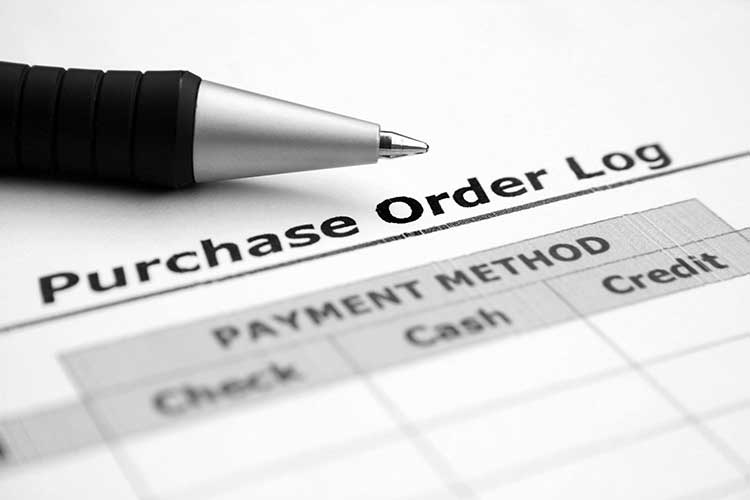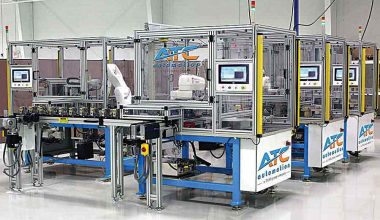You require a specific product or service to run your small business. So you contact your suppliers and explain your requirements. They supply it. You have to pay them for it. That’s the end of the story. Doesn’t that sound too simple? Yes, it is. Yes, the process of obtaining goods can be more complicated than described above. However, obtaining services from trusted vendors in a smooth, timely manner does not have to be too good to be true. It’s possible, and using purchase orders can help. In this article, we’ll see the different types & examples of purchase orders, the process flow, and the right format for a purchase order.
What is a Purchase Order?
A purchase order, also known as a PO, is a legal document that a buyer sends to a supplier or vendor to authorize a purchase. POs specify what the buyer wants to buy and how much of it they want to receive. These agreements aid in the documentation of both the buyer and seller’s transactions.
POs benefit both the buyer and the seller. Small companies may decide what products and services they need from their suppliers and when they need them by issuing purchasing orders.
This keeps the activities of the small business successful and coordinated. It also helps the seller to ensure that the goods and services needed is available before committing to fulfillment, allowing the buyer flexibility to prepare accordingly.
POs will also assist the buyer and seller in keeping correct, comprehensive records for auditing and financial statements.
How does a Purchase Order work?
Now that we’ve described what a purchase order is, let’s go over how to make one.
#1. The buyer agrees to purchase goods from the seller.
Prior to placing an order, the buyer must be able to recognize a need that the seller’s product or service will meet. During this process, the buyer is to determine what product or service is required, how much is required (if possible), and when it is required (again, if possible).
For instance, if you need to order new boxes to ship your product orders to customers, figure out how many you’ll need and when you’ll need them.
If you expect a holiday rush, you might look at last year’s box order and multiply it by your expected growth this holiday season to order the appropriate number.
#2. The buyer creates a purchase order and submits it to the seller for approval.
With the above details, the buyer should draft a purchase order and submit it to their seller for approval. When submitting a PO to a vendor, specify when you require approval to keep the process on track.
Ideally, the answer should arrive in plenty of time for the buyer to obtain the product or service on time. Otherwise, it should allow the buyer enough time to source from another seller if necessary.
Continuing with the previous example, once you’ve found a vendor who can supply your boxes, know how many boxes you’ll need, and when you’ll need them, you can use this information to draft your purchase order. Send to your sales representative or point of touch.
#3. The seller checks the purchase order and confirms whether or not they can satisfy the request.
If the seller receives the PO, it is their responsibility to review the request and verify inventory or availability. This is to confirm whether it can be met by the buyer’s deadline.
In the case of the package shipment, the vendor has checked your order and determined that they are able to satisfy your request after checking their inventory and shipping capability.
#4. Purchase order acceptance.
If the seller can satisfy the buyer’s request, they will accept the PO, making it legally binding on all parties.
Since the box company can satisfy your request, they sent you an authorized copy of the PO to confirm.
#5. Product or service delivery.
After the PO has been approved, the seller is responsible for delivering the agreed-upon product or service. They can also produce and submit an invoice to the buyer for the amount specified on the PO during this stage. The invoice should summarize the products delivered, the appropriate quantity, and the amount owed.
For instance, after you approve the shipment of boxes, you should obtain the completed order as well as an invoice for the sum owed. This vendor accepts net 30 terms and will expect payment within 30 days of issuing the invoice.
#6. Invoice bill is paid
During this final point, the buyer is liable for paying the invoice following the seller’s payment terms.
It is now up to you, the customer, to pay the invoice according to the agreed-upon payment terms.
What is the Proper Purchase Order Format?
Are you ready to make your own purchase order? These are the details you must provide.
- Header — Provide information about your company, such as the company name, business address, purchase order date, and order number.
- Vendor details — Indicate who should receive the PO. This is where you mention the seller company’s name, your own contact name, and the seller company’s address.
- Ship to — Indicate where the order should be delivered, the shipping process, the shipping terms, and the expected delivery date.
- Order specifics — Include a line item for each product in the order that includes the product code or SKU number, item name or description, quantity of units ordered, price per unit, and delivery date.
- Summarize — Finish the purchase order by including a subtotal, any necessary discounts, fees, shipping costs, and the total.
Here’s an example purchase order format that includes all of the points listed above:
Types of Purchase Order
It is critical to understand that you do not create all purchase orders equal and their format might differ too. You might be thinking at this point, “If you’ve seen one PO, you’ve seen ’em all,” but that’s simply not true. There are four types of purchase orders, which differ in terms of their format and how much information it include
#1. Standard Purchase Orders
Standard purchase orders are the most common and well-known. In this case, the buyer understands the details of the purchase and can identify the item or service being purchased, the quantity, delivery schedule, and payment terms.
A company that is running low on printer cartridges, for example, may place a standard purchase order because they know exactly how much they need and when they need it. This is an example of a purchase order.
Depending on the requirements, standard POs can be created for a variety of different functions. For example, the above template could be modified to include:
- Services to be provided
- Contracting out
- Sale on consignment
#2. Planned Purchase Orders
A customer who places a planned purchasing order is predicting their company’s potential needs for the item in question by making a PO in advance. Details such as the object, weight, and payment terms are visible in this case, but the quantity is based on an informed guess, and the delivery date is provisional.
If the same company that is running low on printer cartridges places a planned buying order, the buyer in charge will estimate how many printer cartridges they need for a more flexible delivery schedule. This is an example of a planned purchase order.
#3. Blanket Purchase Orders
Buyers use a blanket purchase order to position several orders at once in order to negotiate discounted prices.
For example, if the same company can get a better price by deciding to place several orders of printer cartridges and paper from a single supplier, they might think about using a blanket PO to get these products. Here’s an example of a purchase order in this case.
#4. Contract Purchase Orders
The most formal variant is a contract purchasing order. Until issuing a PO referencing the contract, the buyer and seller sign a contract specifying the terms of the purchase. This form of purchasing order provides the most legal safeguards for all parties involved.
In the case of printer supplies, if a company signs a contract with their supplier detailing the products, quantity, pricing, and delivery schedule of the promised items, and then follows through with a regular PO, these companies are under a contract purchase order agreement. This is an example of a contract purchase order.
Having a purchasing order process in place will make the procurement process move more quickly and benefit both buyers and sellers.
Read Also: 11+ BEST PURCHASE ORDER SYSTEM FOR SMALL BUSINESS 2023
Purchase Order Process
The purchase order process covers everything from writing it up to delivering it. The Purchase Order Process is divided into the following steps.
#1. Imagination
You issue the PO after submitting the purchase requisition, typically by the procurement team or a project administrator.
#2. Acceptance
If all concerned agree on the goods, quantity, price, and delivery conditions, the contract is signed by the vendor agreeing to the terms.
#3. Dispatching
in dispatching, you send the PO to the vendor through the preferred channel. Also, you can do this in person, on paper, by fax or email, and so on.
#4. Shipping and handling
The products specified in the PO are delivered by the vendor. When the condition of the products is satisfactory, such as no defects or missing objects, they are inspected and accepted. On the worksite, this is typically accomplished by an administrator or procurement manager.
#5. Finishing
If the order is complete, an acceptance invoice is submitted to financing for payment processing. The PO is closed until payment is received.
Steps In The Purchase Order Process
The steps in the purchase order process are as follows:
- Create a purchase order
- Approve a purchase order
- Send a purchase order to the vendor.
- PO has been received
- Goods or Service Receipt
- Invoicing
- Matching in Three Directions
- Payment Authorization and Scheduling
- Closure of PO
What’s a PO For?
Your company issues purchase orders to sellers (the vendor). Buyers use them to specify needs and pricing and document ordered goods/services legally.
Who Makes Purchasing Orders?
The buyer orders. After approval, the buyer, or purchase requestor, will create a purchase order. For accurate fulfillment, the customer transmits the purchase order to the seller.
How Does PO Work?
Before purchasing goods or services, the PO process confirms and specifies the requirement. Process payments and audit findings.
Who Signs Purchase Orders?
A purchase order is binding when both parties sign it. Before sending the purchase order to the vendor, ensure sure your corporate representative has signed it.
Conclusion
Say goodbye to illegible handwriting, misplaced POs, and hours upon hours of data entry. a cloud-based Purchase Order converts bundles of paperwork into easily traceable digital formats that are safely stored on the cloud.
Although implementing a procurement solution can appear to be a quick fix for all of your PO-related problems, the process is actually very complex. As a result, it is important to have some purchasing order best practices in place. This is to ensure that the procurement tool is working as it should.
The right procurement best practice will repair your broken purchase order process, boost performance, and increase ROI. While the theory of what a purchase order is may seem complicated, looking at some of the more popular best practices will clear it up once and for all.
Purchase Order FAQs
How do I make a purchase order?
Here are the most common purchase order process steps:
- Create a purchase order.
- Send out multiple requests for quotation(RFQ)
- Analyze and select a vendor.
- Negotiate contract and send PO.
- Receive goods/services.
- Receive and check invoice (3-Way Matching)
- Authorize invoice and pay the vendor.
- Record keeping.
Why do you need a purchase order?
Purchase Orders are documents issued from a Buyer (your organization) to a Seller (the vendor). They are an important tool for Buyers because they formalize requirements and pricing, and serve as legally binding documentation of the goods/services that were ordered
What is a purchase order vs invoice?
The key difference is that a purchase order is sent by buyers to vendors with the intention to track and control the purchasing process. On the other hand, an invoice is an official payment request sent by vendors to buyers once their order is fulfilled
Is a purchase order a payment?
A purchase order (PO) is a legally binding document created by a buyer and presented to a seller. … Because the order is filled before the buyer receives their bill, a purchase order gives the seller insurance against non–payment






